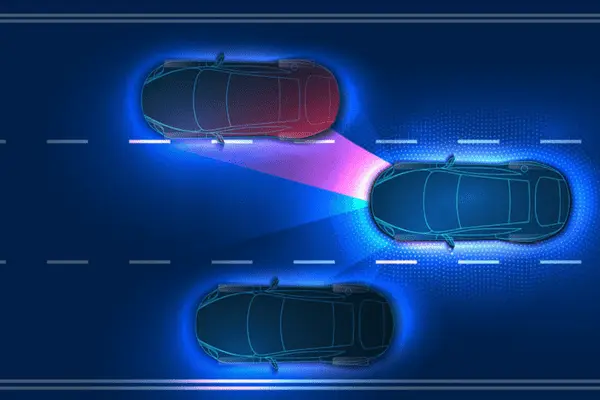Eco-driving With ADAS
Introduction
With global concern about environmental sustainability growing, automakers are increasing their efforts to encourage eco-friendly driving practices. One significant development in this field is the integration of Advanced Driver Assistance Systems (ADAS) into cars. ADAS technologies aim to increase fuel efficiency, safety, and convenience while reducing emissions.
Fuel economy is a significant factor in the world’s energy consumption. Using driver feedback to encourage eco-driving ADAS is one way to improve fuel efficiency. New research suggests that eco-driving could be promoted through the use of Advanced Driver-Assistance Systems (ADAS).
Another technique to improve powertrain efficiency for fixed speeds and fuel economy is an Optimal Energy Management Strategy (Optimal EMS), which uses engine and battery power best. The best EMS operates via engine power control. Recent research indicates that the greatest gains can be obtained when Eco-driving With ADAS and an ideal EMS are combined.
Among the sensors used by advanced driver-assistance systems (ADAS) nowadays for active safety applications are ultrasonic sensors, radio detection and range (RADAR), light detection and ranging (LIDAR), radio detection and range (RADAR), and various types of imaging systems.
To identify objects in movies and classify them, computer vision is a crucial component of ADAS research. Using a camera is one of the simplest methods to determine what kind of object the car is approaching. The generic object detection pipeline consists of the following steps: image acquisition, pre-processing, segmentation, object detection and tracking, depth estimates, and system control. Current methods look into deep learning algorithms, such as convolutional neural networks (CNN), to increase accuracy and consistently finish object detection tasks.
This blog post will examine how ADAS promotes eco-driving and how it could change our daily commutes while reducing our carbon footprint.
1. Being Aware of Eco-Driving
Before talking about ADAS and how it affects eco-driving, it is important to understand what Eco-driving With ADAS is. Using driving techniques to improve fuel economy and lessen the damaging impacts of cars on the environment is known as “eco-driving.” Key elements of eco-driving include smooth acceleration and deceleration, keeping a steady speed, minimizing needless idling, and predicting traffic conditions to reduce the need for sudden braking or acceleration.
2. The Evolution of Advanced Driver Assistance Systems
The term “ADAS” refers to a collection of technologies that assist drivers with various aspects of vehicle control and safety. Over time, ADAS has undergone significant changes as a result of advancements in sensors, artificial intelligence, and computer power. The most widely used ADAS technologies are Traffic Sign Recognition (TSR), Autonomous Emergency Braking (AEB), Lane Keeping Assist (LKA), and Adaptive Cruise Control (ACC).
3. Eco-driving With ADAS Synergy with ADAS
Eco-friendly driving practices could be greatly enhanced by the installation of ADAS in automobiles. Let’s look at a few strategies employed by ADAS to produce this synergy:
By employing sensors to track the distance and speed of the car ahead of it, ACC (Adaptive Cruise Control) automatically modifies the speed of the vehicle to maintain a safe following distance. Through the prevention of abrupt accelerations and decelerations, ACC reduces fuel consumption and emissions while also contributing to a smoother driving experience.
4. Lane Keeping Assist (LKA):
If the car starts to stray from its lane without turning on its turn lights, LKA will gently correct its course. It does this by keeping an eye on lane markings with cameras. By maintaining the vehicle’s center of gravity within its lane, LKA minimizes unnecessary steering corrections and maximizes fuel economy.

5. Autonomous Emergency Braking (AEB):
When autonomous emergency braking (AEB) systems detect an imminent collision with an object or a pedestrian, they automatically engage the brakes to prevent or minimize the impact. This feature reduces aggressive driving, which can use more gasoline, and boosts safety.

6. Recognition of Traffic Signs (TSR):
Traffic signs, such as those that display speed limits and other driving regulations, are recognized by TSR using cameras. By informing the driver of the current speed limits and other traffic conditions, TSR promotes compliance with speed limits and helps save fuel consumption.
7 . Predictive Energy Management:
Some ADAS systems integrate machine learning algorithms, real-time traffic data, and navigation data to enhance energy management.
These systems can calculate the most energy-efficient routes while taking traffic, topography, and other variables into consideration.
8. The Role of Artificial Intelligence (AI)
AI is necessary for ADAS technology to succeed. Machine learning algorithms enable ADAS systems to continuously learn from data and improve their decision-making abilities. As AI advances, ADAS might grow more accurate, adaptable, and sensitive, enhancing Eco-driving With ADAS methods.

9. Challenges and Opportunities
Even though ADAS holds great potential for eco-driving, there are still a lot of challenges to be solved. These include technical limitations, data protection concerns, and the need to modify infrastructure to support these complex systems. In addition, certain drivers may not be able to use ADAS due to issues with cost and general acceptance.
However, the future of Eco-driving With ADAS, ADAS is still bright. As technology advances, costs will likely decrease, making ADAS more accessible to the general public. Moreover, as the usage of electric and hybrid vehicles increases, ADAS will be crucial to optimizing their energy efficiency.
Conclusion
Finally, ADAS (Advanced Driver Assistance Systems) presents a great opportunity to promote eco-friendly driving practices. A few ADAS features that can be added to cars to boost efficiency and reduce emissions and fuel consumption are ACC, LKA, AEB, and TSR. With the advancement of AI and the infrastructure to support these cutting-edge technologies, the goal of a more sustainable and greener future for our roadways is becoming more plausible. The auto industry’s commitment to Eco-driving ADAS is a critical step towards a cleaner and more sustainable future.

